-
 Bitcoin
Bitcoin $106,437.2012
0.82% -
 Ethereum
Ethereum $2,442.5287
0.82% -
 Tether USDt
Tether USDt $1.0005
-0.02% -
 XRP
XRP $2.1812
-0.27% -
 BNB
BNB $645.1327
0.45% -
 Solana
Solana $146.2379
0.39% -
 USDC
USDC $0.9999
-0.01% -
 TRON
TRON $0.2751
0.92% -
 Dogecoin
Dogecoin $0.1662
-0.23% -
 Cardano
Cardano $0.5827
-1.22% -
 Hyperliquid
Hyperliquid $37.5225
0.04% -
 Bitcoin Cash
Bitcoin Cash $479.0877
4.02% -
 Sui
Sui $2.7846
-3.27% -
 Chainlink
Chainlink $13.3576
0.84% -
 UNUS SED LEO
UNUS SED LEO $9.0252
-1.20% -
 Stellar
Stellar $0.2455
-1.07% -
 Avalanche
Avalanche $18.0680
-1.81% -
 Toncoin
Toncoin $2.8948
-1.07% -
 Shiba Inu
Shiba Inu $0.0...01164
-1.65% -
 Litecoin
Litecoin $85.0637
-0.06% -
 Hedera
Hedera $0.1526
-0.89% -
 Monero
Monero $316.2941
0.78% -
 Ethena USDe
Ethena USDe $1.0003
-0.04% -
 Polkadot
Polkadot $3.4113
-1.87% -
 Dai
Dai $1.0000
-0.01% -
 Bitget Token
Bitget Token $4.4488
5.16% -
 Uniswap
Uniswap $7.1740
3.09% -
 Pi
Pi $0.5968
11.43% -
 Pepe
Pepe $0.0...01010
-0.65% -
 Aave
Aave $264.3189
0.40%
Is it a real breakthrough if the neckline is broken but the volume is insufficient?
A neckline break in crypto trading can signal a trend reversal, but without high volume, it may lead to false signals and market traps.
Jun 25, 2025 at 07:49 pm
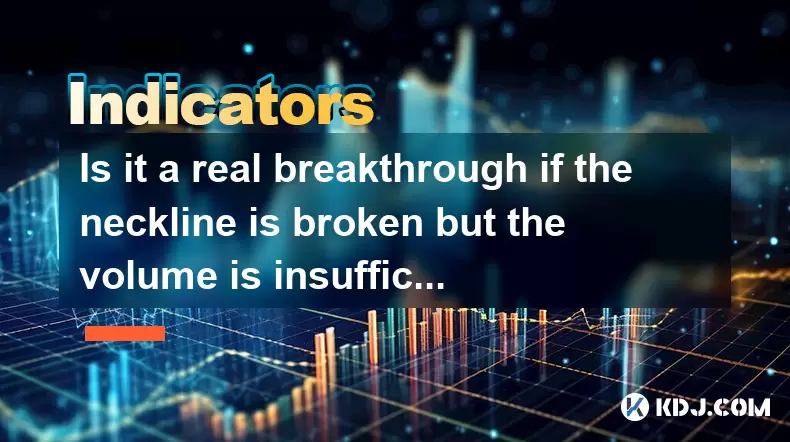
Understanding the Neckline in Technical Analysis
In cryptocurrency trading, technical analysis plays a pivotal role in identifying potential price movements. One of the most significant patterns traders monitor is the head and shoulders pattern, which often signals a reversal from an uptrend to a downtrend. The neckline serves as a critical support or resistance level within this pattern. When prices break below or above this line, it's typically interpreted as a sign that a trend reversal may be imminent.
However, not all neckline breaks are created equal. A key factor that influences the reliability of such a breakout is trading volume. In traditional technical analysis, a valid breakout should coincide with a noticeable increase in volume, confirming that institutional or large-scale traders are participating in the move. Without sufficient volume, the breakout may lack conviction and could be misleading.
The neckline itself acts as a psychological threshold for traders.
The Role of Volume in Confirming Breakouts
Volume is often referred to as the "fuel" behind price action. It provides insight into the strength of a move and helps distinguish between genuine reversals and false breakouts. When a neckline is broken with high volume, it indicates strong selling or buying pressure, depending on the direction of the breakout. This kind of signal is more likely to result in a sustained trend change.
Conversely, when a neckline is broken but volume remains low, it raises concerns about the authenticity of the breakout. Low volume suggests that the move lacks broad market participation and may be driven by noise traders, automated bots, or short-term volatility. As a result, the price might quickly reverse back into the previous pattern, trapping those who acted solely based on the breakout.
A breakout without volume can easily lead to a false signal in crypto markets.
Why Volume Matters in Cryptocurrency Markets
Cryptocurrency markets are known for their high volatility and susceptibility to manipulation. Unlike traditional financial markets, crypto exchanges often experience rapid price swings due to whale activity, algorithmic trading, and news-driven sentiment. Because of these characteristics, relying solely on price patterns without considering volume can be risky.
In particular, many altcoins trade on decentralized or smaller exchanges where volume data may be unreliable or manipulated. Even on major platforms, sudden spikes or dips in price can occur with minimal volume, especially during off-peak hours. Therefore, volume serves as a necessary filter to validate whether a breakout has real market backing.
In low-volume environments, even a small order can create the illusion of a breakout.
How to Analyze a Neckline Break with Insufficient Volume
When evaluating a neckline break with insufficient volume, traders should take several steps to avoid being misled:
- Compare current volume to average volume: Look at the average volume over the past 10–20 periods. If the breakout volume is significantly below this average, proceed with caution.
- Check multiple timeframes: Sometimes, what appears as a breakout on a 1-hour chart may not show the same behavior on a 4-hour or daily chart. Cross-referencing across timeframes can help confirm or reject the validity of the breakout.
- Monitor retest behavior: After a breakout, watch how the price reacts when revisiting the neckline area. A strong rejection would suggest the breakout was valid, while a quick reentry into the pattern implies weakness.
- Use additional indicators: Tools like the Relative Strength Index (RSI), Moving Average Convergence Divergence (MACD), or On-Balance Volume (OBV) can offer supporting evidence about the strength of the move.
Analyzing the context around a low-volume breakout is essential for accurate decision-making.
Common Misinterpretations of Breakouts in Crypto Trading
One of the most common mistakes among novice traders is acting immediately on a price breakout without verifying its legitimacy through volume or other indicators. In the fast-moving world of cryptocurrencies, false breakouts are frequent. These can be triggered by:
- Whale manipulation: Large holders may push the price through key levels to trigger stop-loss orders before reversing the trend.
- Automated trading algorithms: Some bots execute trades based on predefined technical triggers, creating artificial momentum.
- News-driven volatility: Breaking news or rumors can cause erratic price movements that don't reflect underlying market sentiment.
Because of these factors, traders must remain skeptical of any breakout until it's supported by meaningful volume and confirmed by subsequent price action.
False breakouts thrive in low-volume, high-volatility conditions typical of crypto markets.
Frequently Asked Questions
Can a neckline break still be valid if volume is low?
Yes, it can, but with caution. While volume is a strong confirmation tool, some legitimate breakouts occur on lower volume, especially in mature markets or during consolidation phases. Always look for follow-through in price action and consider using trailing stops or waiting for a retest before entering a trade.
What tools can help confirm a breakout besides volume?
Traders often use the On-Balance Volume (OBV) indicator, Chaikin Money Flow (CMF), or the MACD histogram to assess the strength of a breakout. Additionally, monitoring order book depth and open interest (especially in futures markets) can provide insights into true market participation.
Should I ignore all low-volume breakouts?
Not necessarily. Context matters. In a strong trending market, occasional low-volume pullbacks or breakouts may still align with the overall direction. However, in sideways or uncertain markets, ignoring volume increases the risk of entering false moves.
How can I differentiate between real and fake breakouts in real-time?
Watch for immediate follow-through after the breakout. Real breakouts tend to see continued movement away from the neckline within the next few candles. Fake ones often stall or reverse quickly. Combining this observation with volume and order flow analysis improves accuracy.
Disclaimer:info@kdj.com
The information provided is not trading advice. kdj.com does not assume any responsibility for any investments made based on the information provided in this article. Cryptocurrencies are highly volatile and it is highly recommended that you invest with caution after thorough research!
If you believe that the content used on this website infringes your copyright, please contact us immediately (info@kdj.com) and we will delete it promptly.
- Binance Lists Newton Protocol: Airdrop Ignites NEWT Token Surge!
- 2025-06-26 00:45:12
- SPX6900, Meme Coins, and DogWifHat Bulls: What's Happening?
- 2025-06-26 00:45:12
- Crypto Meme Coins: Riding the Upside Potential Wave
- 2025-06-26 00:25:12
- Moca Chain: Revolutionizing User Verification with Self-Sovereign Identity
- 2025-06-26 00:25:12
- US Mint Goes Comic Book Cool: Superman, Batman, and Wonder Woman on Coins!
- 2025-06-26 00:52:13
- Rohit Sharma's T20 World Cup Triumph: A Toss to Remember Against Pakistan
- 2025-06-26 00:55:12
Related knowledge
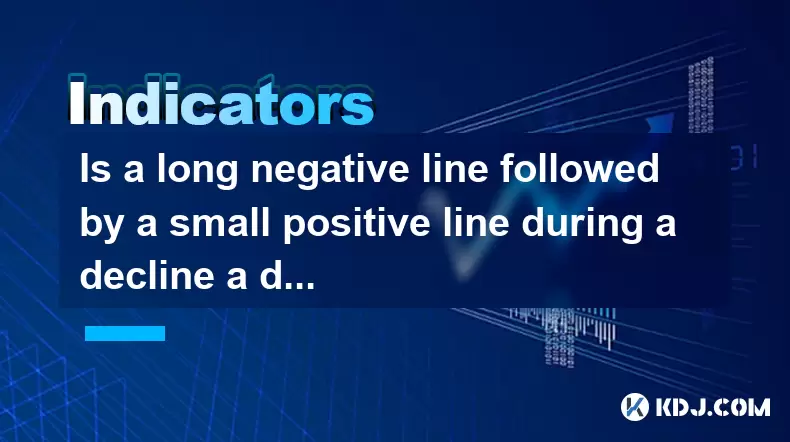
Is a long negative line followed by a small positive line during a decline a decline relay?
Jun 26,2025 at 12:21am
Understanding Candlestick Patterns in Cryptocurrency TradingIn the realm of cryptocurrency trading, candlestick patterns play a crucial role in analyzing price movements. These visual representations help traders identify potential reversals, continuations, or consolidation phases. One such pattern that often appears during downtrends is a long negative...
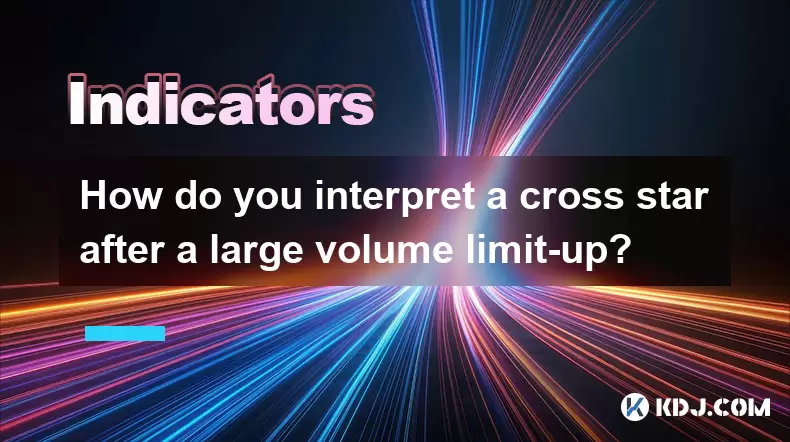
How do you interpret a cross star after a large volume limit-up?
Jun 25,2025 at 11:01pm
Understanding the Cross Star Pattern in Cryptocurrency ChartsIn cryptocurrency trading, candlestick patterns play a crucial role in technical analysis. One such pattern is the cross star, which typically appears as a candle with small real body and long upper and lower shadows. This pattern often signals market indecision and can indicate a potential re...

When the volume shrinks to 30% of the breakthrough volume when stepping back after breaking through the platform?
Jun 25,2025 at 09:49pm
Understanding Breakthrough Volume in Cryptocurrency TradingIn the world of cryptocurrency trading, volume is a crucial indicator that reflects market sentiment and price action. When a cryptocurrency breaks through a key resistance level or a consolidation platform, it often comes with a surge in trading volume. This breakthrough volume signals strong b...
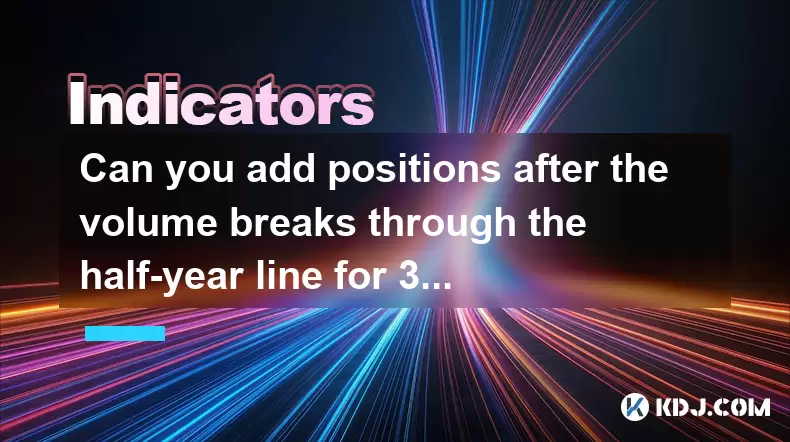
Can you add positions after the volume breaks through the half-year line for 3 consecutive days with reduced volume?
Jun 25,2025 at 08:00pm
Understanding the Half-Year Volume Line in Cryptocurrency TradingIn cryptocurrency trading, technical indicators often guide traders in making decisions. One such metric is the half-year volume line, which refers to the average daily trading volume over a 180-day period. When traders refer to a volume breakout above this line, they are observing whether...
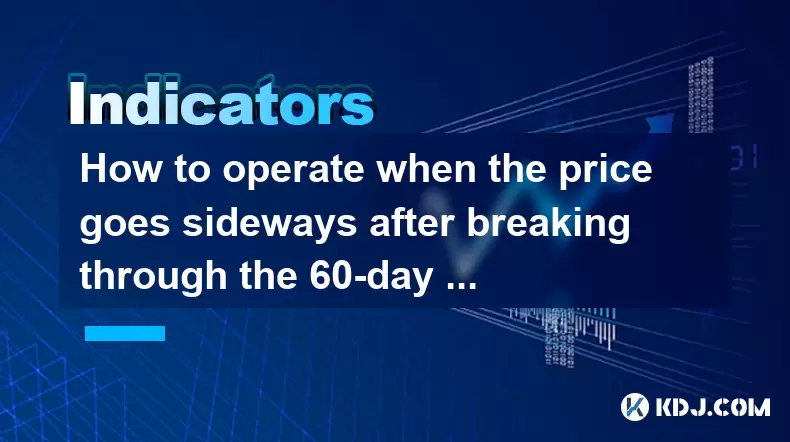
How to operate when the price goes sideways after breaking through the 60-day line with large volume?
Jun 25,2025 at 07:08pm
Understanding the 60-Day Line Breakout with High VolumeWhen a cryptocurrency asset breaks through its 60-day moving average line with large volume, it often signals a potential shift in momentum. This kind of breakout typically suggests that institutional or large retail traders are entering the market aggressively. However, when the price starts to mov...
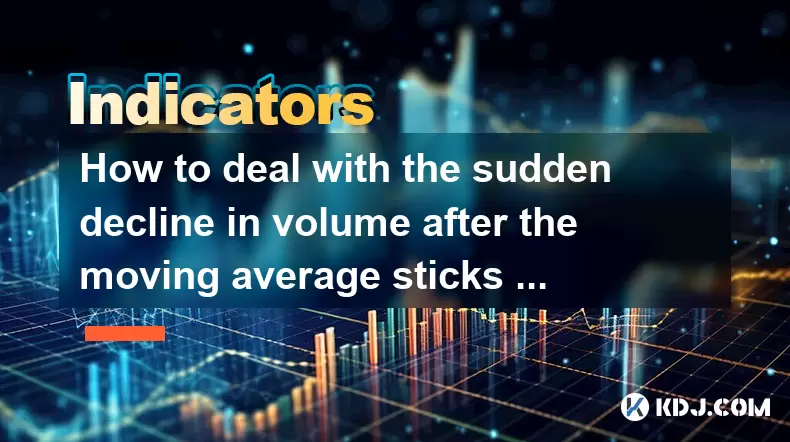
How to deal with the sudden decline in volume after the moving average sticks together?
Jun 25,2025 at 06:35pm
Understanding the Moving Average Convergence and Its ImplicationsIn the world of cryptocurrency trading, moving averages (MAs) are essential tools used to identify trends and potential reversals. When multiple moving averages converge or 'stick together,' it often indicates a period of consolidation or indecision in the market. This phenomenon can be ob...

Is a long negative line followed by a small positive line during a decline a decline relay?
Jun 26,2025 at 12:21am
Understanding Candlestick Patterns in Cryptocurrency TradingIn the realm of cryptocurrency trading, candlestick patterns play a crucial role in analyzing price movements. These visual representations help traders identify potential reversals, continuations, or consolidation phases. One such pattern that often appears during downtrends is a long negative...

How do you interpret a cross star after a large volume limit-up?
Jun 25,2025 at 11:01pm
Understanding the Cross Star Pattern in Cryptocurrency ChartsIn cryptocurrency trading, candlestick patterns play a crucial role in technical analysis. One such pattern is the cross star, which typically appears as a candle with small real body and long upper and lower shadows. This pattern often signals market indecision and can indicate a potential re...

When the volume shrinks to 30% of the breakthrough volume when stepping back after breaking through the platform?
Jun 25,2025 at 09:49pm
Understanding Breakthrough Volume in Cryptocurrency TradingIn the world of cryptocurrency trading, volume is a crucial indicator that reflects market sentiment and price action. When a cryptocurrency breaks through a key resistance level or a consolidation platform, it often comes with a surge in trading volume. This breakthrough volume signals strong b...

Can you add positions after the volume breaks through the half-year line for 3 consecutive days with reduced volume?
Jun 25,2025 at 08:00pm
Understanding the Half-Year Volume Line in Cryptocurrency TradingIn cryptocurrency trading, technical indicators often guide traders in making decisions. One such metric is the half-year volume line, which refers to the average daily trading volume over a 180-day period. When traders refer to a volume breakout above this line, they are observing whether...

How to operate when the price goes sideways after breaking through the 60-day line with large volume?
Jun 25,2025 at 07:08pm
Understanding the 60-Day Line Breakout with High VolumeWhen a cryptocurrency asset breaks through its 60-day moving average line with large volume, it often signals a potential shift in momentum. This kind of breakout typically suggests that institutional or large retail traders are entering the market aggressively. However, when the price starts to mov...

How to deal with the sudden decline in volume after the moving average sticks together?
Jun 25,2025 at 06:35pm
Understanding the Moving Average Convergence and Its ImplicationsIn the world of cryptocurrency trading, moving averages (MAs) are essential tools used to identify trends and potential reversals. When multiple moving averages converge or 'stick together,' it often indicates a period of consolidation or indecision in the market. This phenomenon can be ob...
See all articles























































































